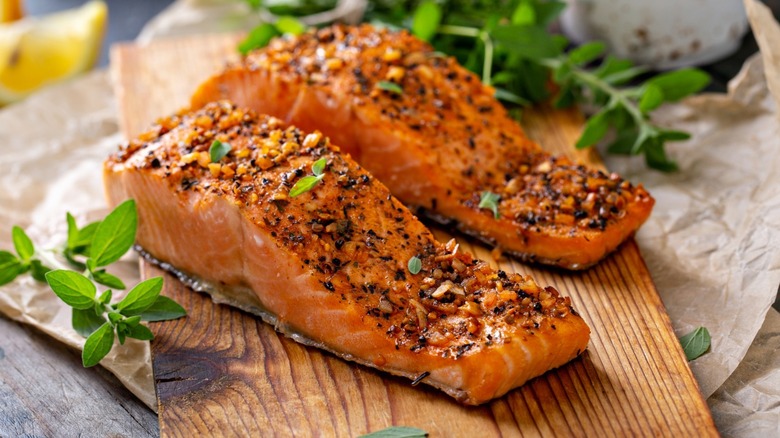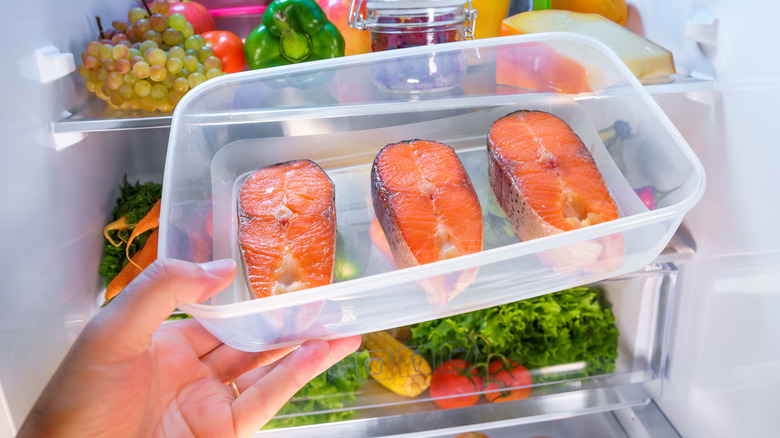How Long Your Salmon Cuts Will Take To Defrost In The Refrigerator
You probably know salmon is delicious and easy to prepare. But when you buy fresh salmon, unless you're planning on cooking the fish soon after you bring it home, you should store it in the freezer because raw salmon only lasts for about two hours at room temperature and up to two days in the fridge — but between nine and 12 months when frozen. Now, you could cook it straight out of the freezer, but it will take a relatively long time and may not yield a good result. Instead, thaw your salmon safely the USDA-recommended way – using cold water, the microwave, or the refrigerator.
The best way to defrost salmon without compromising its quality, texture, and safety, is in the refrigerator. Food Network adds that you will need eight to 12 hours if thawing small cuts while you might need 24 hours for big ones. The other methods take less time. However, defrosting salmon in chilled water risks making the fish waterlogged and contaminated. Microwaving is a much quicker option than the others but is likely to result in unevenly thawed portions and a warmer exterior that will later be overcooked. But because the fridge method takes so much time, be sure to plan accordingly.
How should you defrost salmon cuts the in refrigerator?
While this seems relatively simple, there are some more steps that you need to follow. Start by putting the salmon in a bowl to collect the liquid that is released during the defrosting and to prevent it from coming into contact with other food. If the cuts are in vacuum-sealed packaging, Butcher Box advises transferring them to a resealable, leak-proof bag. A study by Michigan State University showed that removing the vacuum packaging exposes fish to oxygen and prevents the growth of Clostridium botulinum and Listeria monocytogenes (which cause botulism and listeriosis respectively). Next, using a fridge thermometer, put the salmon in a place that has a temperature of below 38 degrees F to prevent the growth of botulism and listeriosis-causing bacteria.
You can tell that the cuts have defrosted evenly when they are 'flexible and bendable. Next, check for funky smells, ice crystals, and dry or discolored spots, which could mean that the salmon has gone bad. You can cook your thawed salmon in a variety of ways, but just be careful to resist the urge to rinse it because the bacteria in the raw juices can splash onto and contaminate other foods and surfaces. Finally, if your refrigerator smells fishy afterward, you can deodorize the in several eco-friendly ways and even with coffee grounds.

